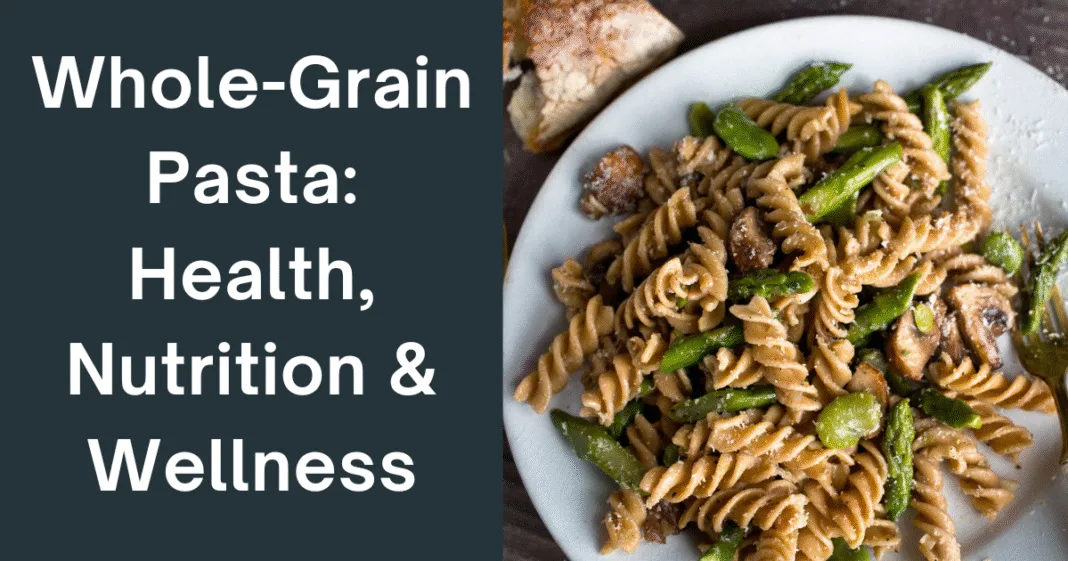The pasta has long been a favorite essential in cultures globally, which is famous for its adaptability and bolstering demand. From Italian trattorias to home kitchens across the globe, it helps as the foundation for countless mealtimes. In recent ages, an important move toward improved eating has brought whole-grain pasta to the forefront of the culinary conversation. Such change is accelerated by a rising consciousness of the importance of fiber and nutrient-rich foods in a stable diet.
This article aims to investigate the world of whole-grain pasta, discovering its health paybacks and nutritional profile as well as its role in a holistic wellness journey. The increasing demand for plant-based diets with including vegan pasta, has significantly improved as per Pristine Market Insights in 2024, noting that the market is increasing to include more suitable replacements for individuals with gluten sensitivities or celiac disease, boosting the demand for the vegan pasta market.
It’s not the same as regular refined pasta, which is made from treated white flour; whole-grain pasta is made from whole wheat flour and keeps all three parts of the grain. Such a crucial difference gives it an advanced concentration of fiber and vitamins, also with minerals. Whereas superior pasta delivers little more than starches, its whole-grain counterpart provides a more nutrient-dense option. The market now provides an extensive variety of whole-grain pastas beyond just whole wheat, with those made from various ingredients, each with its own exclusive flavor and nutritional paybacks.
The Nutritional Outline of Whole-Grain Pasta
This pasta has a stronger nutritional outline, mainly made from complex carbohydrates, which offer sustained energy. Distinctive serving also includes a decent amount of protein and minimal fat.
The most important change lies in its fiber content, which is this pasta rich in soluble and insoluble fiber, and these fibers are dynamic for digestive health and beneficial with regularity and a sense of fullness. Such a progressive fiber density pays off in better appetite control and can be helpful for weight management.
The whole-grain pasta is a decent source of active vitamins and minerals. Such pasta is mostly fortified with B vitamins, which are essential for energy breakdown. They also deliver vital minerals such as iron for blood health and magnesium for muscle health. Whereas better advanced pasta may have some of these nutrients added back, and it certainly includes them as part of the whole kernel, which makes it a more naturally complete and healthy choice.
Health Benefits
- The Digestive Health: This whole-grain pasta is an important source of healthy fibers and these fibers aid in good digestion. If there is high fiber content, it causes steady bowel movements and helps prevent problems like constipation, also supporting a stable gut microbiome. This fiber includes both soluble and insoluble fiber, is adds bulk to stool and supports the abdominal area to function smoothly.
- Heart Health: A person’s meal is filled with whole grains, that as whole-grain pasta, and this pasta helps to reduce the risk of heart disease. Some fibres contain nutrients and antioxidants which help to lower bad cholesterol levels and also help to balance BP. This pasta contributes to lasting heart wellness.
- Blood Sugar Control: The people who are balancing their blood sugar levels, this pasta has become a main and effective choice. Complex carbohydrates and high fibre elements affect the digestive process and cause a gradual release of glucose in the human body. So that this prevents the rapid spikes in blood sugar and insulin that often follow the intake of processed grains.
- Weight Management: The good and satisfying outcomes of whole-grain pasta make it a main component of weight loss and management. The fibre content, which is present in it, helps individuals experience fuller for longer and minimises the attraction towards overeating and also helps to control calorie consumption. Such a feeling of satisfaction results in a reduction of snacking and better portion control and helps to a healthy body weight.
- Nutrient Density: Whole-grain pasta is a nutrient-dense food which are delivering a varied array of vitamins and minerals as well as antioxidants that are lost from refined pasta during processing. It is a decent source of B vitamins, which are vital for energy making and immune function also help to control overall cellular health.
Whole-Grain Pasta in a Balanced Diet
Integrating whole-grain pasta into a composed food is modest and can be done without adding extra calories. A standard helping of cooked pasta is naturally about a half cup or roughly the size of a compressed fist.
To make a whole and nourishing meal need to couple the whole-grain pasta with a variety of other well components. The vegetables with broccoli and bell peppers, and also spinach or cherry tomatoes, help to improve fiber and also microorganisms. The dish is stable by adding lean protein sources, that as grilled chicken and fish or also plant-based options.
Potential Considerations & Myths
Though a healthy option and whole-grain pasta increases a few judgments. It is need to vital to be aware that not all whole-grain pasta is necessarily free from gluten. Most varieties are prepared from whole wheat and contain gluten, which results in individuals with gluten sensitivity searching for replacements made from rice and corn.
There is a common confusion that this pasta is a nutritious intake with fewer calories. In reality, its calorie content is actually like to that of regular pasta. The main to weight management lies in moderation and mindful portion sizes, also combining it with nutrient-dense ingredients.
Conclusion
Whole-grain pasta is a healthful and adaptable alternative to the traditional one. Its rich fiber elements and essential vitamins as well as minerals, which deliver substantial paybacks for gastrointestinal health and heart wellness, also help with blood sugar control with weight management. Considering its accurate dietary value and assimilating it mindfully into a balanced diet with appropriate portion sizes and balancing components and this pasta can be a delightful and health-inducing element of a healthy lifestyle.

